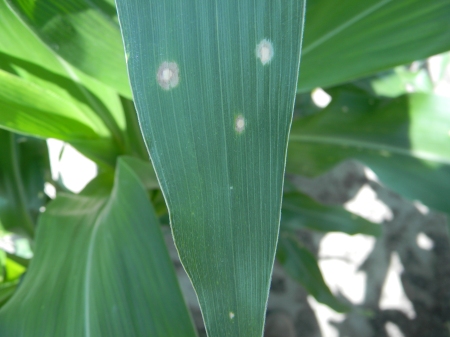Current Crop Stages Make Decisions More Difficult
Georgia corn growers as a whole have a corn crop that ranges from just emerging to near tasseling. Tuesday morning, I had the privilege of talking to my counterparts across the U.S. from Minnesota to Texas to Virginia to Colorado as we meet bi-weekly by Zoom. Quite honestly, it was the same across the country. In some areas of Texas, the corn crop is tasseling while other areas are still planting. There are several northern states with 70 to 90% of the corn crop left to plant.

It, sort of, describes the type of weather we’ve had in Georgia since mid-February. Cold, very cool, cool, warm, nice and warm, and very warm all mixed up. Traveling yesterday to the eastern side of the state literally proved my point. I visited fields that were just reaching V2 to some at V9. This week we started seeing it get slightly hotter (low 90’s) and really push the growing degree units. What does that mean for Georgia corn growers as it gets warmer?
First, later planted corn in middle Georgia will accumulate GDU’s much faster which means it will pass through leaf development faster with shorter internodes. Scenarios like this generally limit yield potential, though it can still be good with good nutrient and water management. Generally, the total amount of dry matter is limited which will limit yield. North Georgia is less affected as soils have better moisture holding capacity, cooler night and days than southern portions of the state.
It is very important to keep up with your GDU’s particularly in later plantings as the crop does grow faster and it is easy to get behind the management curve on fertilizing and irrigating to protect yield potential.
Second, I expect that we will see the beginnings of some disease and insect pressure regardless of the age of the corn crop. As the temperatures warm and humidity rises, it can foster diseases such as Northern Corn Leaf Blight, Southern Corn Leaf Blight and Southern Rust. In addition, thunderstorms can blow in quite violently with high winds and hail causing considerable physical damage to the crop. I’m not being a “Debbie Downer”; just recognizing that we have a crop that is in various stages of growth and some being more vulnerable than others. Corn that is at tasseling will be quite vulnerable to stink bugs as the ear silks begin emerging which attracts stinkbugs. With this said, if you as a grower have small grains nearby that will soon be harvested, please pay close attention as stink bugs will definitely move from those fields to your corn. Please scout and be prepared to spray an insecticide.

In regards to a potential disease pressure, Dr. Bob Kemerait, UGA Plant Pathologist, reminds us to scout and be prepared to use a fungicide. Last Wednesday, in a statement, he reminded us to pay close attention to this potential problem, “It is that time of year I start to get questions about spots on corn. It is not uncommon now to get first reports of northern corn leaf BLIGHT (longer, grey, cylindrical lesions in the first two pictures), northern corn leaf SPOT (smaller reddish-brown lesions with somewhat concentric rings), and common rust. The lesions for northern corn leaf BLIGHT are most often found sparingly and scattered across the field in upper leaves. These diseases can be a problem and deserving of a fungicide application, but usually only if a hybrid is susceptible. This pathogen overwinters in corn crop debris.” Northern corn leaf SPOT and common rust are typically found in the lowest leaves and generally stay there. Common rust and northern corn leaf SPOT are not a threat.

All of this means that we need to be scouting the crop and looking for pest and problems that will take yield potential from us. Much of it is still preventable. Scouting is important in order to get a good ROI on protecting the crop form injury due to things that we can prevent. This time of the year, I see a lot of paraquat drift on corn because it is quite sensitive to paraquat. These spots are often confused for diseases. They are small spots (1-2.5 mm in diameter) that appear suddenly on the surface of the upper leaf tissue. Paraquat can drift a long way and much of it is being used as peanuts began their season.

As the days ahead warm, please be aware that the corn crop uses water much faster and can exhaust subsoil moisture as scattered rain showers become fewer. Generally, depending on ET( evapotranspiration), a corn crop that is nearing the tassel stage will use about .3 inches of water per day. Most of our soils only have a 1 to 1.2 inches of water holding capacity per day. As you can see, an inch of water does not go very far. DO NOT LOSE YIELD POTENTIAL BY WAITING for the crop to show a little stress. If you do, then you have lost more yield that would have easily paid and given you a good return on your investment to turn the pivot on.
I hope that many of you have been checking your tissue analyses to spot deficiencies going into pollination and grain production. If you have, you know it takes a few days to go through the process of taking the sample, sending it off and getting the results. Keep an eye out for those danger spots which results in declining nutrition. There is still a lot of time left to go to finish this year’s crop.